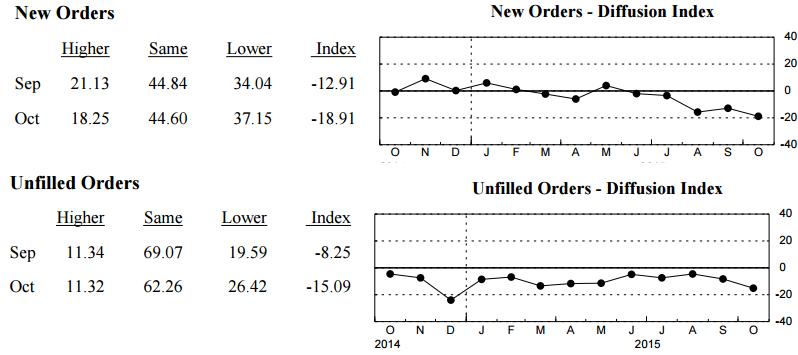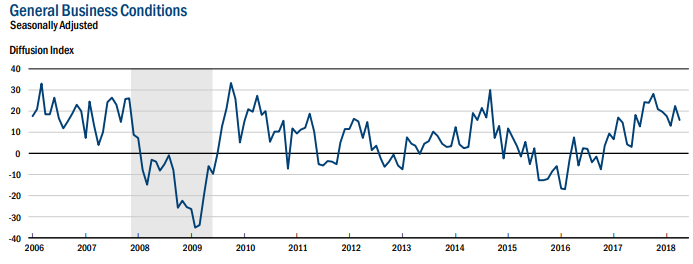The Empire State Manufacturing Survey improved but remains in contraction.
As this index is very noisy, it is hard to understand what these massive moves up or down mean – however this regional manufacturing survey is normally one of the more pessimistic.
Econintersect reminds you that this is a survey (a quantification of opinion). Please see caveats at the end of this post. However, sometimes it is better not to look to deeply into the details of a noisy survey as just the overview is all you need to know.
From the report:
Empire State Manufacturing Survey
z empire1.PNG
The above graphic shows that when the index is in negative territory that it is not a signal of a recession – of 8 times in negative territory (since the Great Recession) – no recession occurred. Conversely, a positive number is likely to be indicating economic expansion. Historically, when it does make a correct negative prediction it can be timely – this index was only two months late in going negative after what was eventually determined to be the start of the 2007 recession.
This survey has a lot extra bells and whistles which take attention away from the core questions: (1) are orders and (2) are unfilled orders (backlog) improving? Econintersect emphasizes these two survey points – and both remain in contraction – and worsened.

Respondents believe the level of unfilled orders (backlog) is has been negative since 2011. Unfilled order contraction can be a signal for a recession – and remains contraction this month.















Leave A Comment